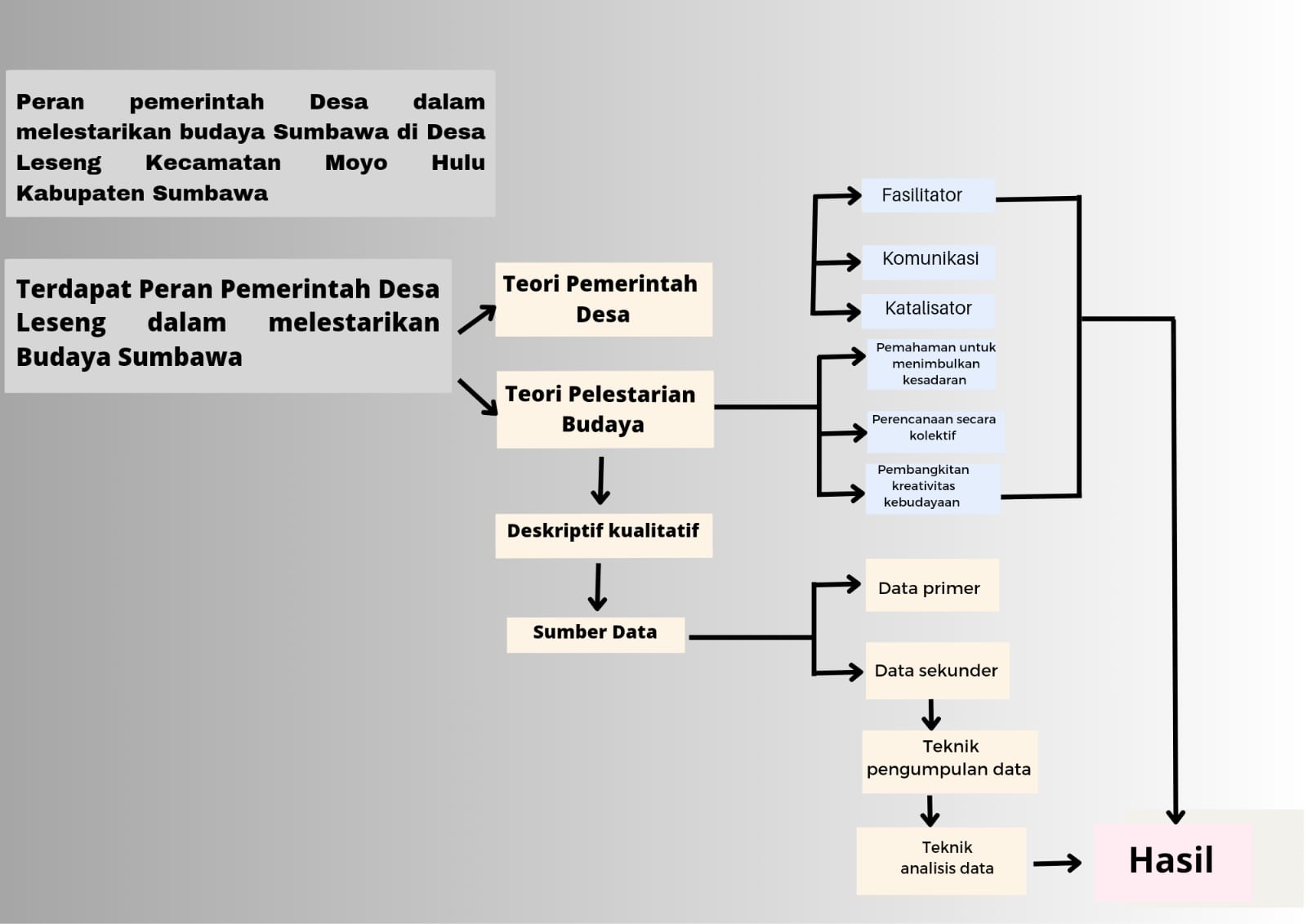PERAN PEMERINTAH DESA DALAM MELESTARIKAN BUDAYA SUMBAWA (Studi Kasus di Desa Leseng Kecamatan Moyo Hulu Kabupaten Sumbawa)
Keywords:
pelestarian, budayaAbstract
Indonesia is a pluralistic society consisting of a number of ethnic and cultural diversity. Indonesia has a rich cultural heritage. The diversity of ethnic groups and cultures in Indonesia gave birth to archipelago cultural arts in each region that developet according to local customs, one of which is Sumbawa Regency which has a variety of traditional arts. Sumbawa district has a variety of traditinal arts. Sumbawa district has a variety of hereditary traditions which are still preserved today, one of which is the blacksmith culture in Leseng Village. Blacksmithing is the ability to make machetes, daggers, knives and other accesories whose main accessories are used to support agricultural, livestock and fishery activities. Leseng Village, Moyo Hulu District, is the place where blacksmiths live who still maintain the traditional way of making handicraft sharp objects. There are two things that make blacksmith crafts in Leseng Village still in demand today, namely the quality of the blacksmith products and the scabbard and hilt which have high cultural aesthetics. The results of the study show that the role of the village government in preserving Sumbawa culture in Leseng village is stated to be good but not optimal because the village goverrnment has not fully paid attentions needed by iron crafsment so it is hoped that in the future the government will consistently pay attention to what is needed by thr craftment iron in the village of Leseng and strengthen the publication network.

